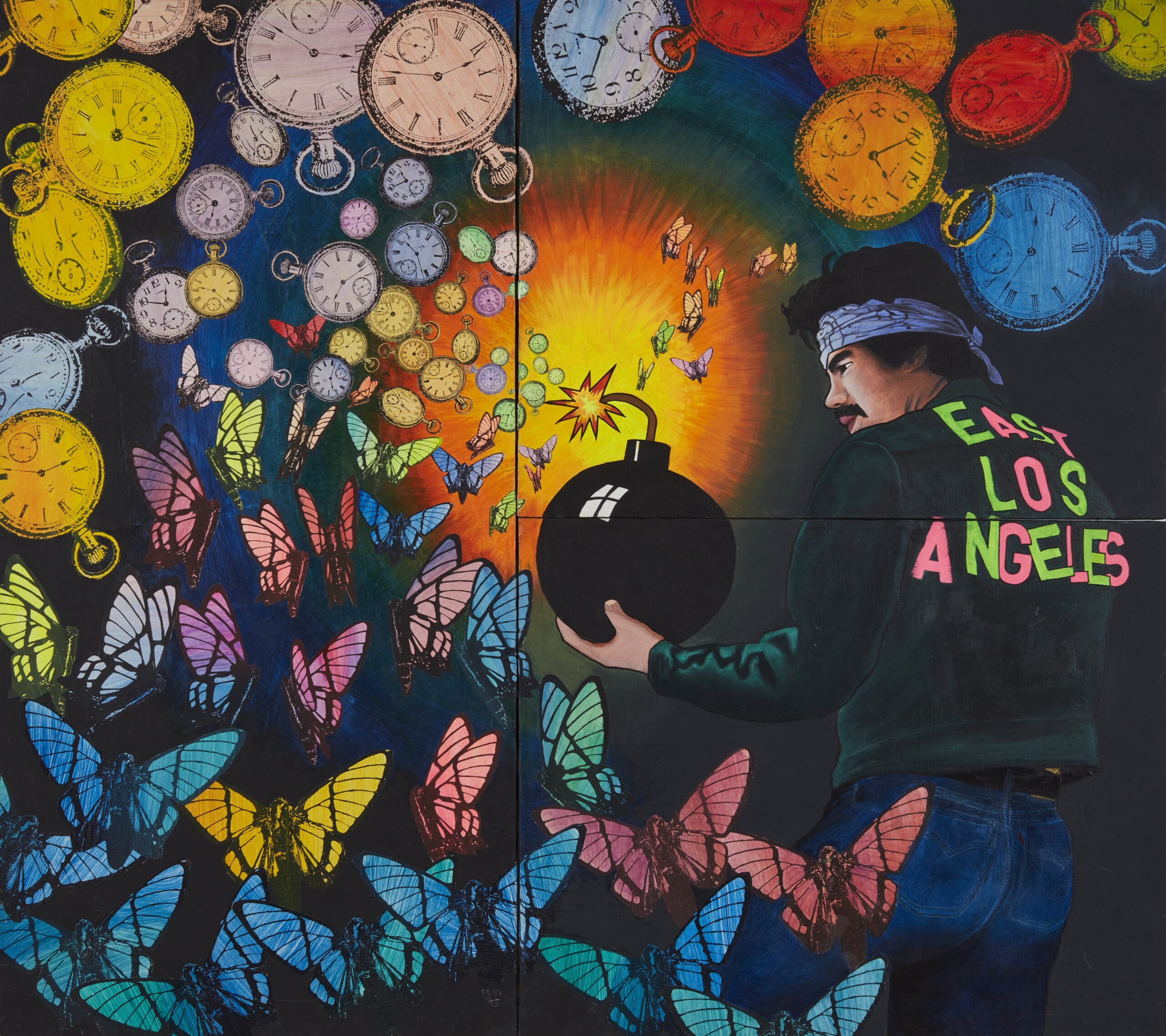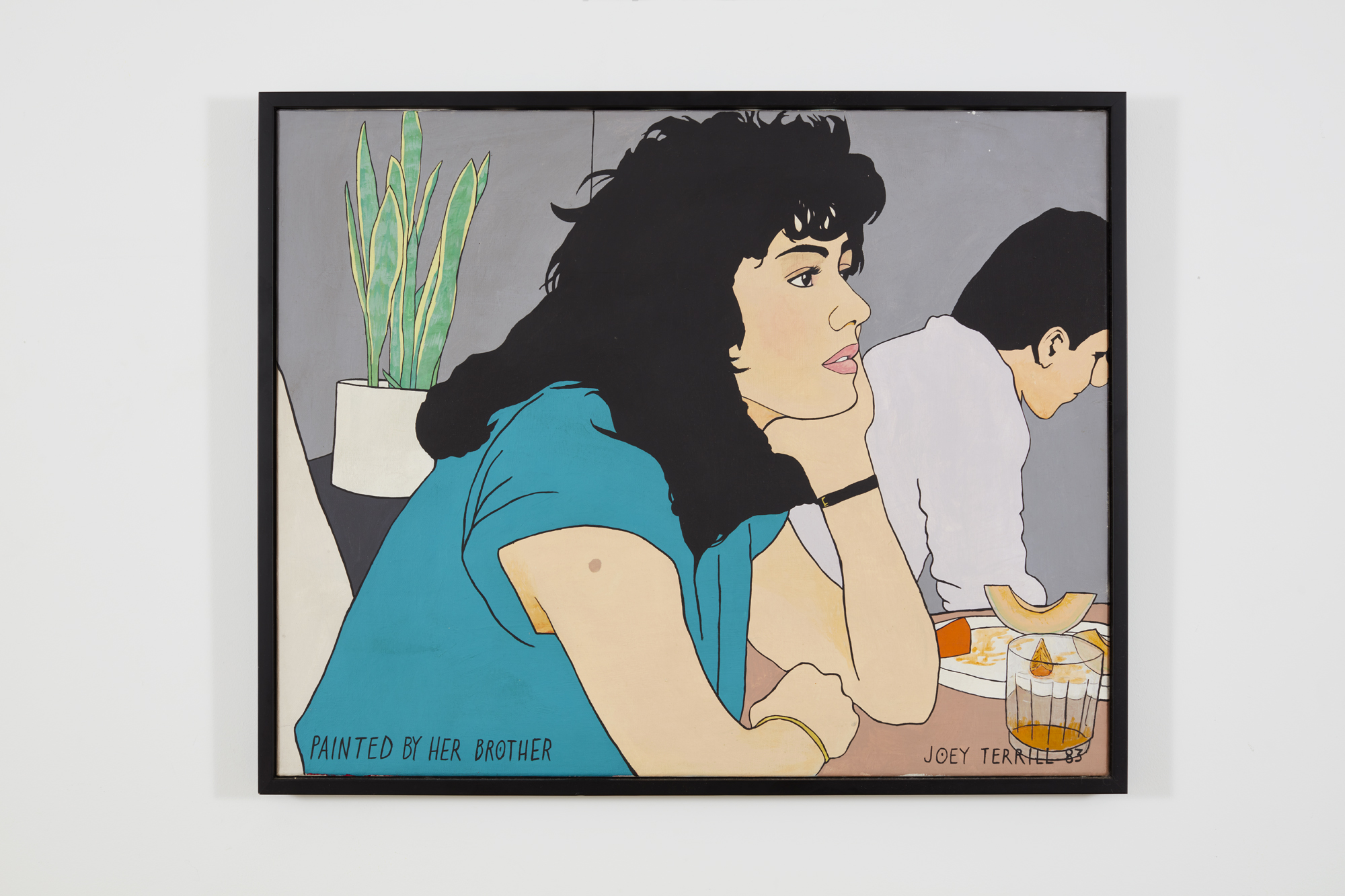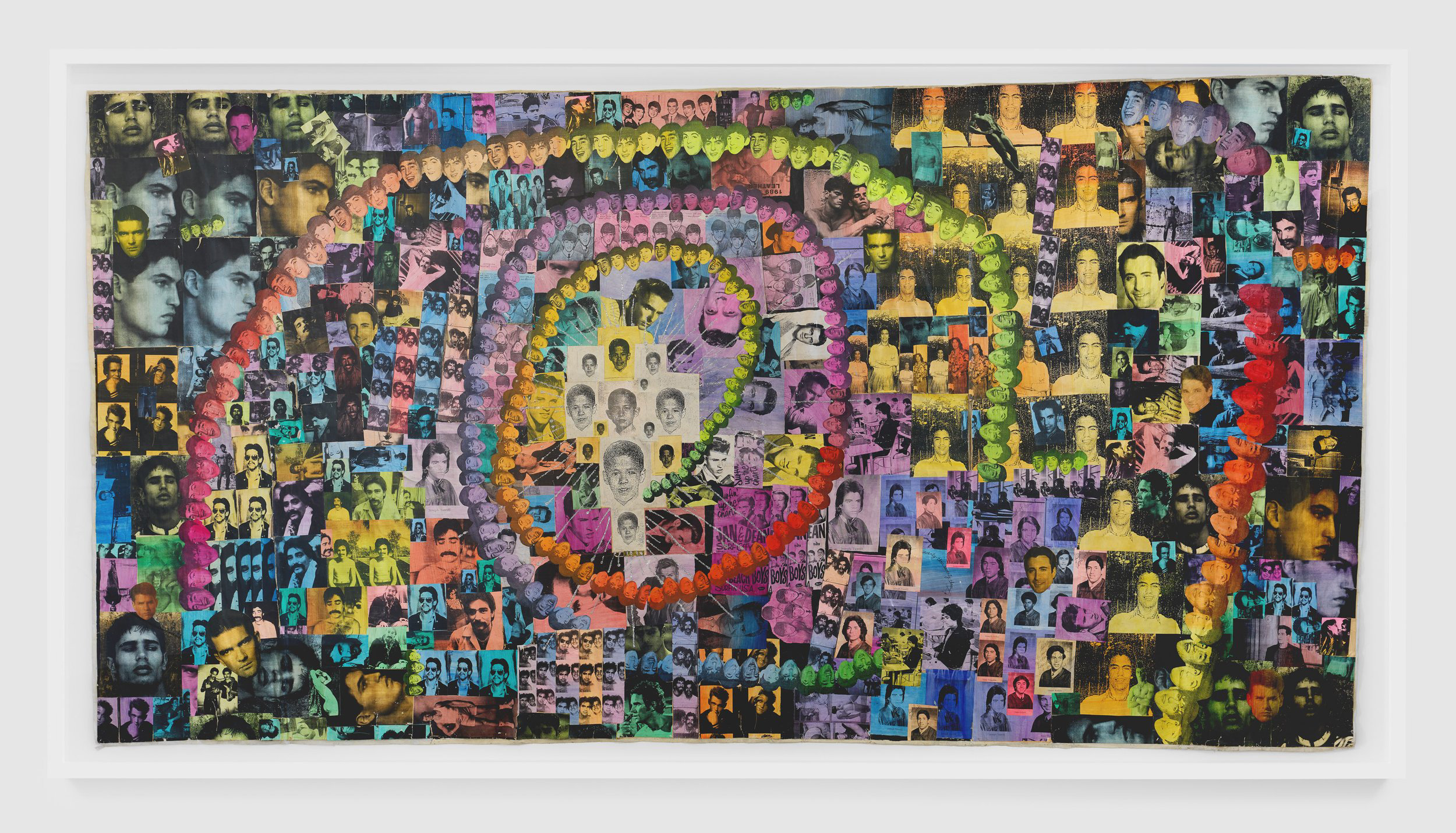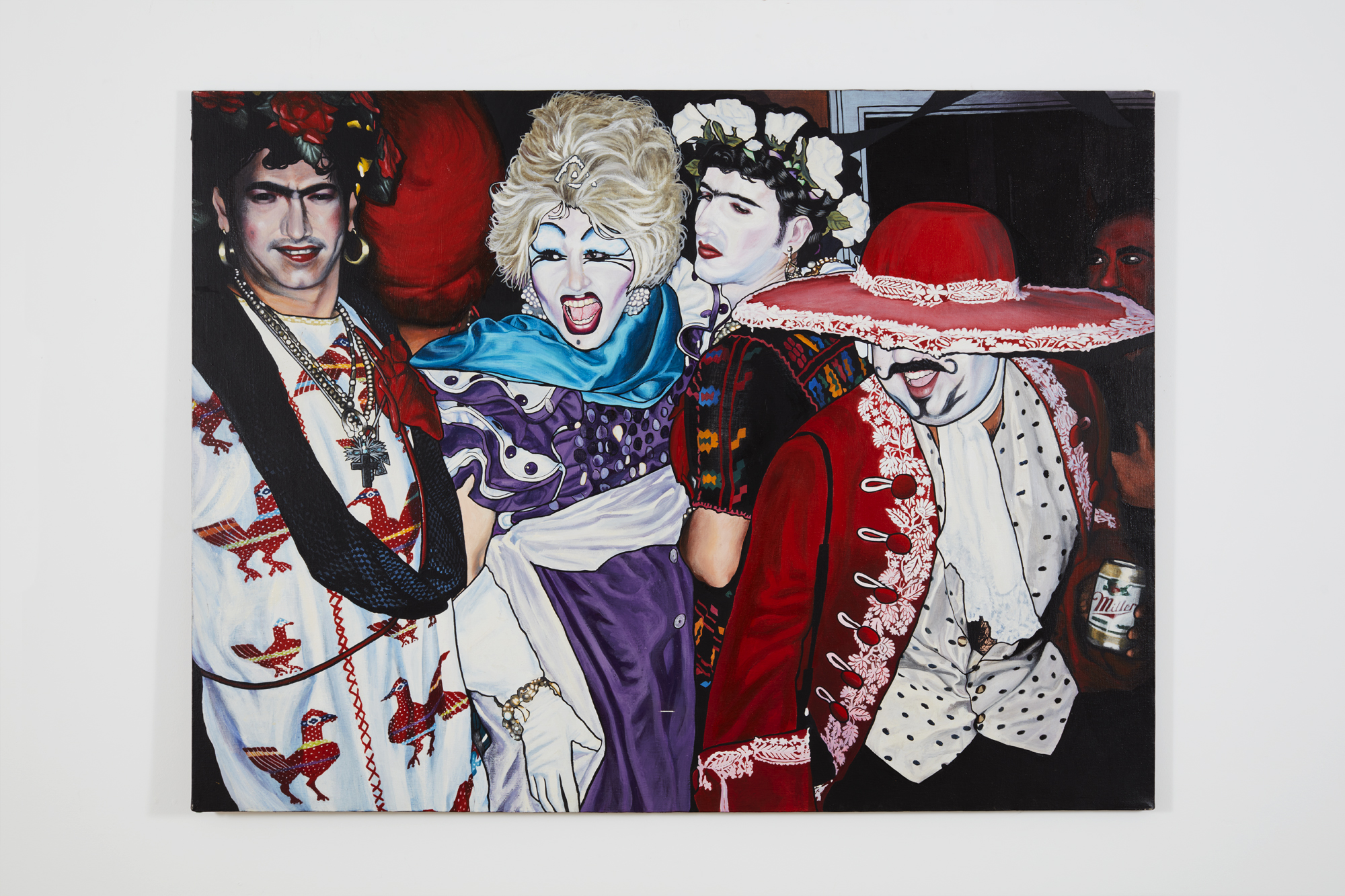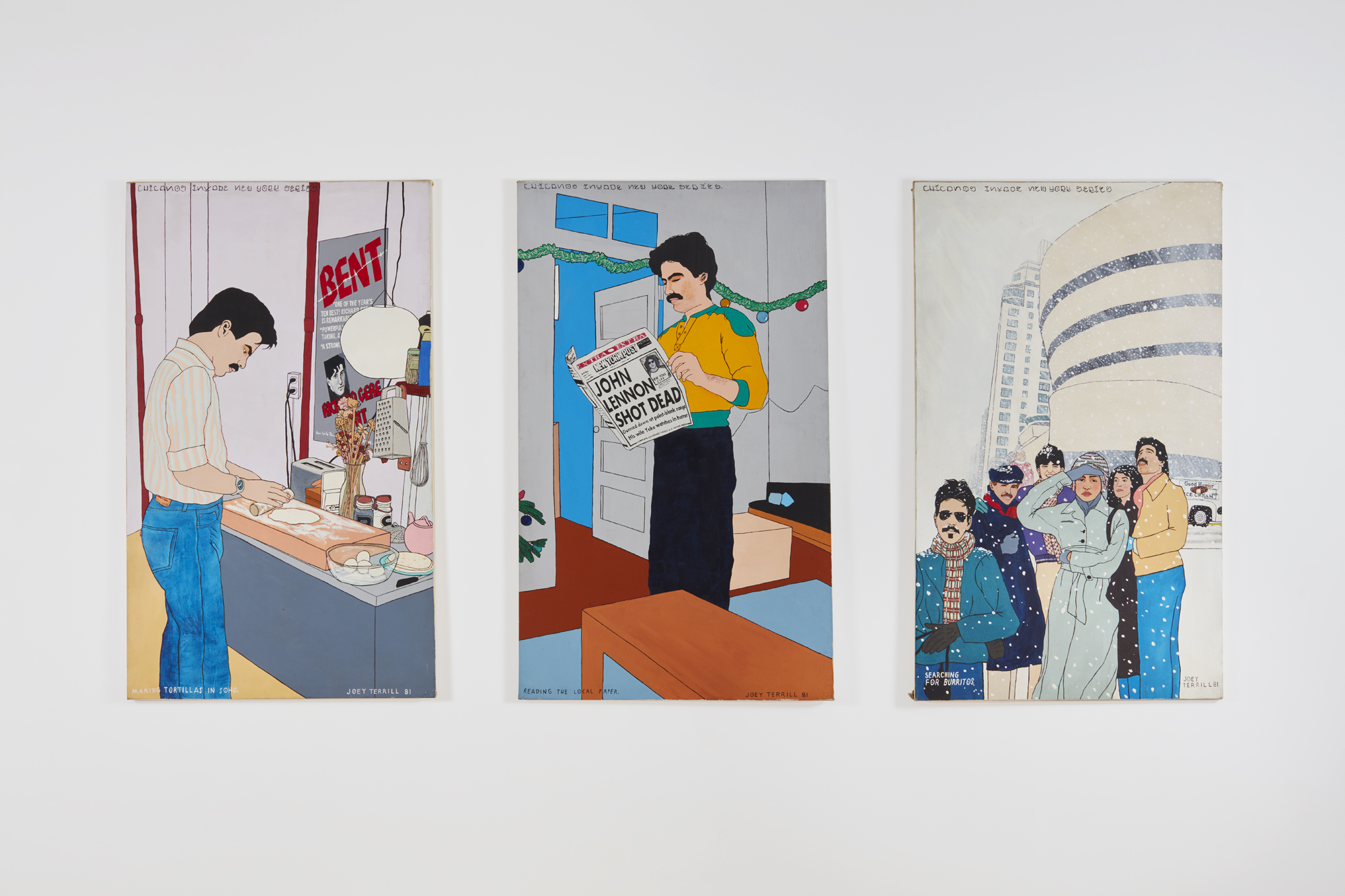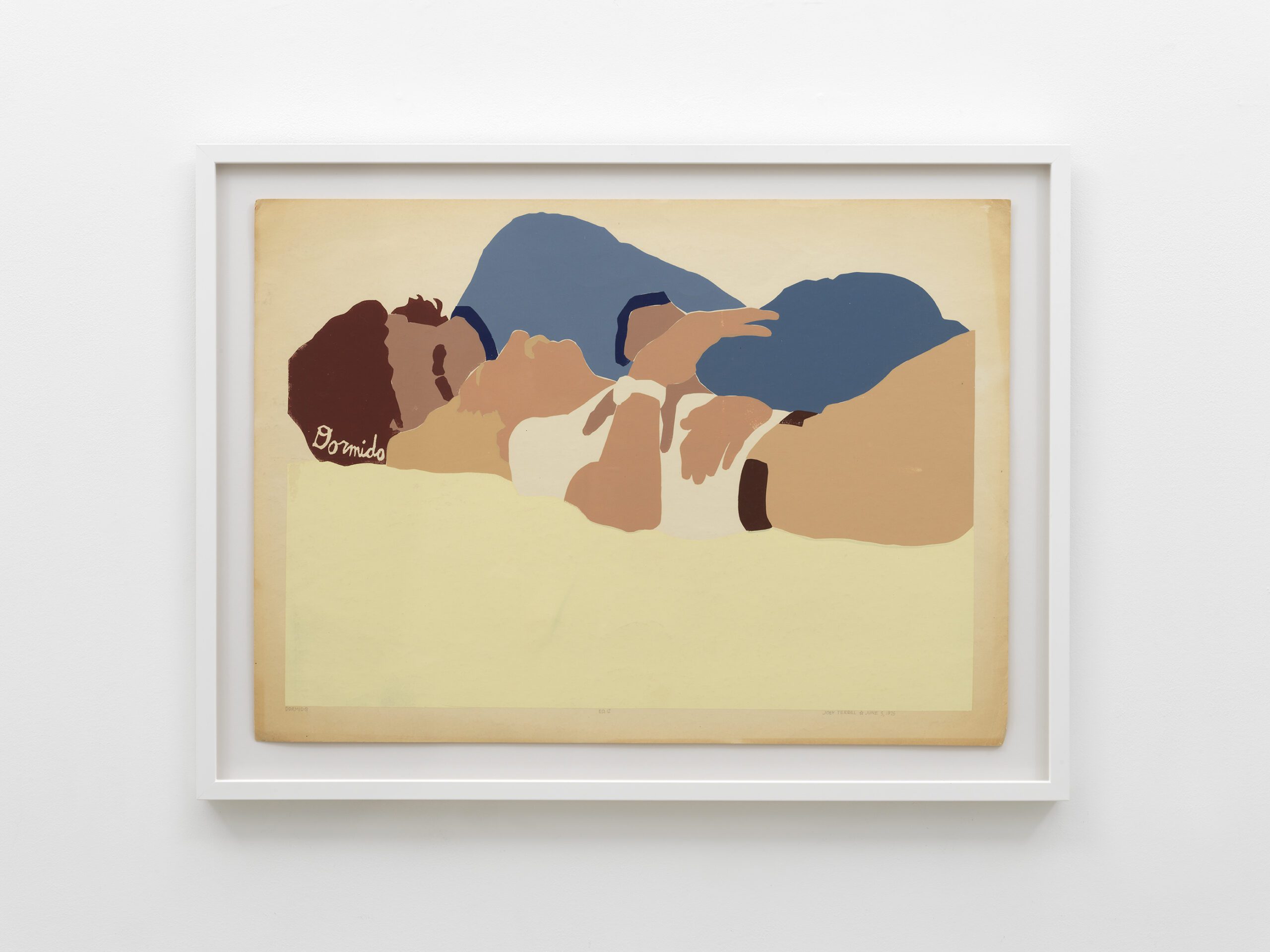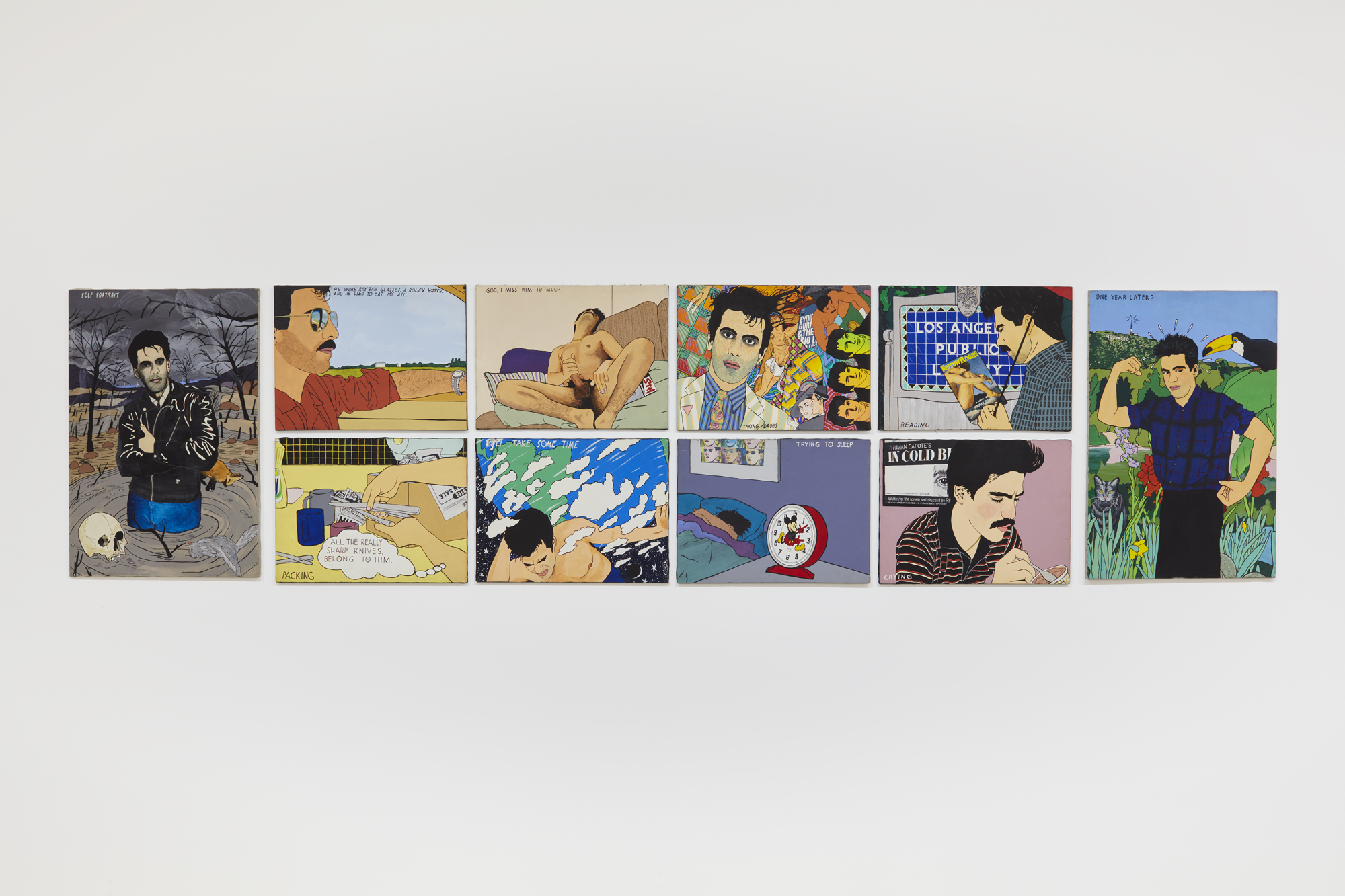Biography
Joey Terrill
1955, Los Angeles, California.
Joey Terrill joins diverse mediums of zine-making, performance, printmaking, collage, and painting in a body of work that tenderly encompasses his intimate experiences of intersecting queer, Chicano and artistic communities. Drawing from the existing visual culture surrounding him, Terrill combines personal photographs, found pop cultural imagery and reproductions of artworks by queer predecessors to conjure utopian landscapes.

